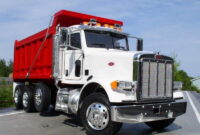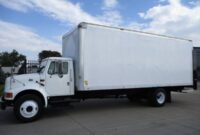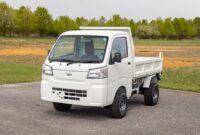Cheap Trucks For Sale Under $500: Navigating the Ultra-Budget Market pickup.truckstrend.com
The allure of a truck is undeniable: utility, ruggedness, and the promise of endless possibilities. But what if your budget is stretched to the absolute limit, specifically under $500? While it might sound like a pipe dream, finding a truck for less than the cost of a decent smartphone is indeed possible. However, the journey into this ultra-budget market requires a hefty dose of realism, mechanical aptitude, and a clear understanding of what you’re truly buying.
This comprehensive guide will delve into the world of cheap trucks for sale under $500, defining what this price point signifies, where to find these elusive vehicles, what to expect, and how to make the most of your minimal investment. It’s not about finding a reliable daily driver; it’s about uncovering potential, whether for parts, a dedicated project, or a utilitarian beast for private land.
Cheap Trucks For Sale Under $500: Navigating the Ultra-Budget Market
The Reality of "Under $500" Trucks: Setting Realistic Expectations
Let’s be upfront: a truck priced under $500 is not a turnkey solution. It’s almost certainly a project vehicle, a parts donor, or a non-running hulk. These are not the trucks you see advertised on TV, nor are they likely to pass a state inspection without significant investment.
What you can expect from a sub-$500 truck:
- Significant Mechanical Issues: Engine problems (knocking, overheating, not running), transmission failures (slipping, no engagement), major fluid leaks, faulty brakes, worn-out suspension.
- Extensive Rust: Frame rust is a major concern, along with rust on body panels, cab corners, bed floors, and wheel wells. This can compromise structural integrity.
- Electrical Gremlins: Non-functional lights, gauges, HVAC systems, power windows, or even persistent battery drain.
- Missing or Damaged Components: Interior parts, trim pieces, even entire body panels might be absent or severely damaged.
- No Title or Salvage A clear, transferable title is often a luxury at this price point. Many trucks will come with a bill of sale only, making legal registration for road use difficult or impossible.
- High Mileage: Odometer readings are typically well into the six figures, often beyond 200,000 or 300,000 miles.

Who is this market for?
- DIY Enthusiasts and Mechanics: Individuals who enjoy working on vehicles, have the tools, skills, and time to tackle major repairs.
- Parts Scavengers: Owners of a similar truck model who need specific components (engine, transmission, body panels) and find it cheaper to buy a whole truck than individual parts.
- Farmers/Landowners: Those needing a dedicated vehicle for off-road use on private property, where registration and roadworthiness are not concerns.
- Aspiring Restorers (with deep pockets for parts): Someone looking for a very long-term project and willing to invest significantly more than the purchase price.
Where to Find Them & What to Look For (Initially)
Finding these ultra-cheap trucks requires patience, vigilance, and knowing where to look beyond traditional dealerships.
Primary Sources:
-
Online Marketplaces:
- Craigslist: Still a goldmine for private sales of older, cheaper vehicles. Use specific search terms like "truck for parts," "project truck," "mechanics special," or "truck needs work." Filter by price.
- Facebook Marketplace: Similar to Craigslist, often with more photos and direct messaging. Join local "buy/sell/trade" groups.
- eBay Motors: Less common for sub-$500, but occasionally a non-running or project truck might appear. Look for "local pickup only."
-
Local Classifieds & Word-of-Mouth:
- Check local newspapers (especially smaller community papers).
- Tell friends, family, and local mechanics you’re looking. Sometimes, people just want to get rid of an old vehicle quickly.
- Drive around rural areas; sometimes "for sale" signs appear on old trucks sitting in yards.
-
Auctions:
- Police Impound Auctions: Vehicles that have been impounded and unclaimed are often sold at very low prices. Condition is unknown, and they might lack titles.
- Government Surplus Auctions: Government agencies sometimes auction off older, decommissioned vehicles.
- Salvage/Junk Auctions: Often sell vehicles that have been deemed total losses or are at the end of their life.
Initial Screening (Before You Go See It):
- Read the Description Carefully: Look for key phrases like "runs," "doesn’t run," "needs work," "parts truck," "no title," "bill of sale only."
- Examine Photos: Look for obvious rust, major dents, missing parts, and the overall condition of the vehicle. Request more photos if necessary.
- Ask Specific Questions:
- "Why are you selling it?" (Often reveals the major issue)
- "What are the known mechanical issues?"
- "Does it start? Does it run? Can it be driven?"
- "Is the title clean and in your name?" (Crucial for registration)
- "When was it last driven?"
- "Are there any major fluid leaks?"
Red Flags to Watch Out For:
- Seller unwilling to provide details or meet in a public place.
- "Perfect" condition claims for a sub-$500 truck.
- No clear title or vague answers about ownership.
- Photos that hide crucial areas (e.g., no undercarriage shots, blurry images).
Essential Pre-Purchase Inspection (DIY Guide)
Once you’ve found a promising candidate, a thorough (though realistic) inspection is vital. Assume it’s going to need significant work, but verify the extent. Bring a flashlight, a magnet (to check for body filler over rust), and ideally, a mechanically inclined friend.
-
Exterior and Frame:
- Rust: This is your number one enemy. Check the frame rails thoroughly, especially near suspension mounts, body mounts, and where the cab meets the bed. Significant frame rust is often a deal-breaker. Look at cab corners, rocker panels, wheel arches, and the bed floor.
- Accident Damage: Look for misaligned panels, paint inconsistencies, and bent frame components.
- Tires: Check for dry rot, uneven wear (indicating suspension issues), and tread depth. Expect to replace them.
-
Engine Bay:
- Fluid Leaks: Look for oil, coolant, power steering, or brake fluid leaks.
- Belts and Hoses: Check for cracks, fraying, or extreme wear.
- Battery: Note its condition. If it’s dead, try to jump-start it if possible (with seller’s permission).
- Listen: If it starts, listen for knocking, ticking, grinding, or excessive smoke from the exhaust (blue for oil, white for coolant, black for fuel).
-
Underneath the Truck:
- Frame Again: Get under there and really inspect the frame for cracks, holes, or severe rust.
- Exhaust System: Look for major rust holes or broken components.
- Drivetrain: Check driveshafts, differentials, and transfer case (if 4WD) for leaks or damage.
- Brake Lines: Inspect steel and rubber brake lines for rust or cracks. Critical safety item.
-
Interior:
- Odors: Musty smells could indicate water leaks or mold.
- Seats/Dashboard: Note overall condition. Is anything missing?
- Electrical: Test lights (headlights, tail lights, turn signals), wipers, horn, radio, and power windows/locks (if equipped).
- Pedals: Check for excessive wear on brake and clutch pedals.
- Odometer: Note the mileage, but assume it may not be accurate.
-
Test Start (if possible):
- If it runs, let it idle. Listen for noises, check for smoke.
- If it moves, test the brakes (gently), check if it shifts into gear. Do not drive it on public roads if it’s unsafe or unregistered.
What You Can Do With a Sub-$500 Truck
Even with its inevitable flaws, a sub-$500 truck can serve several purposes:
-
Parts Donor: This is arguably the most common and practical use. If you own a similar model that needs a specific engine, transmission, body panel, or interior component, buying a cheap truck for parts can save you hundreds, if not thousands, compared to buying new or rebuilt parts.
-
Farm or Off-Road Vehicle: For use strictly on private property (farm, ranch, hunting land), these trucks can be invaluable. Registration, inspections, and even basic roadworthiness are often irrelevant. They can haul feed, tools, firewood, or act as a utility vehicle.
-
Dedicated Project Vehicle: For those with a passion for automotive restoration or mechanical learning, a sub-$500 truck offers a cheap entry point. It’s a fantastic way to learn welding, engine rebuilding, bodywork, and electrical diagnostics without the pressure of ruining an expensive vehicle. Be prepared for a long journey and significant additional investment in parts and tools.
-
Scrap Metal: As a last resort, if the truck is beyond repair or its parts are not needed, you can sell it to a scrap metal yard. While you won’t get rich, you might recoup a portion of your initial investment and clear space.
Important Considerations & Challenges
Buying a truck under $500 isn’t just about the purchase price. There are critical hidden costs and challenges to factor in.
- Title Status: The single biggest hurdle for road-legal use.
- Clean Ideal but rare. Allows for straightforward registration.
- Salvage Indicates the vehicle was declared a total loss by an insurance company. Can be registered, but often requires a special inspection and may carry a stigma.
- Bill of Sale Only: Extremely common for cheap vehicles. This means the seller doesn’t have a title, or it’s lost/never transferred. Registering a "bill of sale only" vehicle for road use can be incredibly difficult, often impossible, depending on state laws. Do not buy if you intend to drive it on the road and it lacks a clear title.
- Hidden Repair Costs: The $500 is just the beginning. Even minor repairs can quickly add up. A new set of tires, brake components, or a replacement battery can easily exceed your initial purchase price. Major repairs (engine, transmission) will cost thousands.
- Time Commitment: These are not quick fixes. Expect to spend many hours, days, or even months working on the truck, depending on your goals.
- Safety: If you intend to drive it on public roads at all, prioritize safety-critical items like brakes, steering, and tires. Never compromise on these.
- Transportation: How will you get the truck home if it’s not running? Towing services can be expensive. Factor in the cost of a flatbed tow truck or renting a car hauler.
- Tools & Equipment: You’ll need a basic set of wrenches, sockets, jacks, jack stands, and potentially specialized tools for specific repairs.
- Disposal: Be mindful of environmental regulations for disposing of old fluids, tires, and metal parts.
Practical Advice and Actionable Insights
- Define Your Purpose: Before you even start looking, decide why you want a sub-$500 truck. Is it for parts? A farm vehicle? A learning project? Your purpose will dictate what kind of issues you can tolerate.
- Budget for Repairs (Seriously): Whatever you pay for the truck, assume you’ll spend at least that much again, and likely more, on parts and potential towing.
- Learn Basic Mechanics: Even if you’re not a seasoned pro, understanding basic diagnostics (e.g., checking fluids, identifying leaks, listening to engine noises) will save you money and headaches. YouTube tutorials are your friend.
- Join Online Forums: Specific truck model forums (e.g., "OBS Ford F-Series Forum," "GMT400 Forum") are invaluable resources for common issues, repair guides, and finding used parts.
- Don’t Be Afraid to Walk Away: There will always be another cheap truck. If a deal feels too sketchy, or the vehicle is in worse shape than anticipated, move on.
- Negotiate, but Be Realistic: Most sellers are just trying to get rid of a problem. There’s usually room for negotiation, especially if you point out significant flaws.
- Bring a Friend: Two sets of eyes are better than one, especially if one of you has mechanical experience.
Common Truck Models & What to Expect Under $500
While specific models can vary widely based on location and individual circumstances, here’s a general idea of trucks you might find in this price range, along with their typical condition:
| Truck Model (Example) | Typical Year Range (Est.) | Common Issues at <$500 | What to Expect | Best Use Case |
|---|---|---|---|---|
| Ford F-150 (7th/8th Gen) | 1980s – early 1990s | Extensive rust (cab corners, fenders, bed, frame), worn engines (300 I6, 302/351 V8), transmission slips (AOD, E4OD), electrical quirks, brake line rust. | Runs rough or not at all, significant body rust, likely no AC, worn interior. | Parts donor, farm truck, learning restoration project. |
| Chevrolet C/K Series (GMT400) | Late 1980s – mid 1990s | Rust (rocker panels, bed sides, cab mounts), TBI fuel injection issues, transmission slips (4L60E), worn suspension components, failing door hinges. | Needs major mechanical overhaul, potential frame issues, interior wear and tear. | Parts for popular models, off-road project, field vehicle. |
| Dodge D/W Series (Ram) | 1980s – early 1990s | Engine issues (LA series V8s), transmission problems, pervasive frame rust, electrical gremlins, body panel rust, weak brakes. | Very rough condition, likely not running, extensive rust throughout. | Dedicated parts truck, scrap metal, extreme project. |
| Toyota Pickup / Tacoma (Older) | 1980s – early 1990s | Critical frame rust (especially rear), engine leaks (head gasket, oil), transmission wear, significant body dents, high mileage. | If it runs, it’s a miracle. Often very high mileage, significant rust. Usually a parts truck at this price. | Extremely rare find at this price if runnable; usually for parts. |
| Nissan Hardbody Pickup | 1980s – early 1990s | Engine issues (timing chains, head gaskets), rust (bed, fenders), electrical problems, worn suspension. | Similar to older Toyotas, usually very worn, significant rust, often not running. | Parts donor, very light duty farm use if revived. |
Frequently Asked Questions (FAQ) About Cheap Trucks Under $500
Q: Can I find a reliable daily driver for under $500?
A: Extremely unlikely. Trucks at this price point are almost always project vehicles, parts donors, or non-running vehicles that require significant work and further investment. Expect extensive mechanical and cosmetic issues.
Q: What are the most common problems with trucks under $500?
A: The most prevalent issues include severe rust (especially on the frame and body panels), engine or transmission failure, major fluid leaks, electrical system malfunctions, worn-out brakes and suspension, and often, a lack of a clear, transferable title.
Q: Do these trucks usually come with a title?
A: Often, no. Many sellers of sub-$500 trucks will offer only a "bill of sale" because the title is lost, never transferred, or the vehicle has a salvage title. If you intend to register the truck for road use, a clear title in the seller’s name is crucial. Verify your state’s laws regarding title transfers for older vehicles.
Q: How much should I budget for repairs after buying a truck for under $500?
A: You should budget at least as much as, if not double or triple, the purchase price for repairs, even if you do all the labor yourself. Parts alone can quickly add up. For example, a set of decent tires, brake components, or a replacement battery can easily cost more than $500.
Q: Is it worth buying a truck for parts?
A: Absolutely, if you own a compatible vehicle that needs specific components. Buying a whole truck for parts can often be significantly cheaper than sourcing individual used or new parts, especially for major components like engines, transmissions, or body panels.
Q: What’s the best way to transport a non-running truck I buy?
A: You will likely need a flatbed tow truck service or a car hauler trailer. Factor in the cost of transportation, as it can sometimes exceed the purchase price of the truck itself. Ensure the seller can assist with loading if needed.
Q: Can I flip one of these trucks for a profit?
A: It’s possible, but very challenging and usually only profitable if you possess significant mechanical skills, have access to extremely cheap parts (or donor vehicles), and can perform all the labor yourself. The time and effort invested often outweigh the potential profit margin for most individuals.
Conclusion
Buying a truck for under $500 is not for the faint of heart, nor is it a shortcut to cheap transportation. It’s a venture into the world of project vehicles, mechanical challenges, and often, rust-riddled relics. However, for the right individual—someone with mechanical aptitude, a clear purpose (like needing a parts donor or a dedicated off-road vehicle), and realistic expectations—it can be an incredibly rewarding experience.
These ultra-budget trucks offer an unparalleled opportunity to learn, to salvage, and to create something useful from what others have deemed worthless. Just remember to approach the search with a critical eye, a healthy dose of skepticism, and a budget that extends far beyond the initial sticker price. Your $500 truck might not be a shining beacon of reliability, but it could be the start of an exciting automotive adventure.


